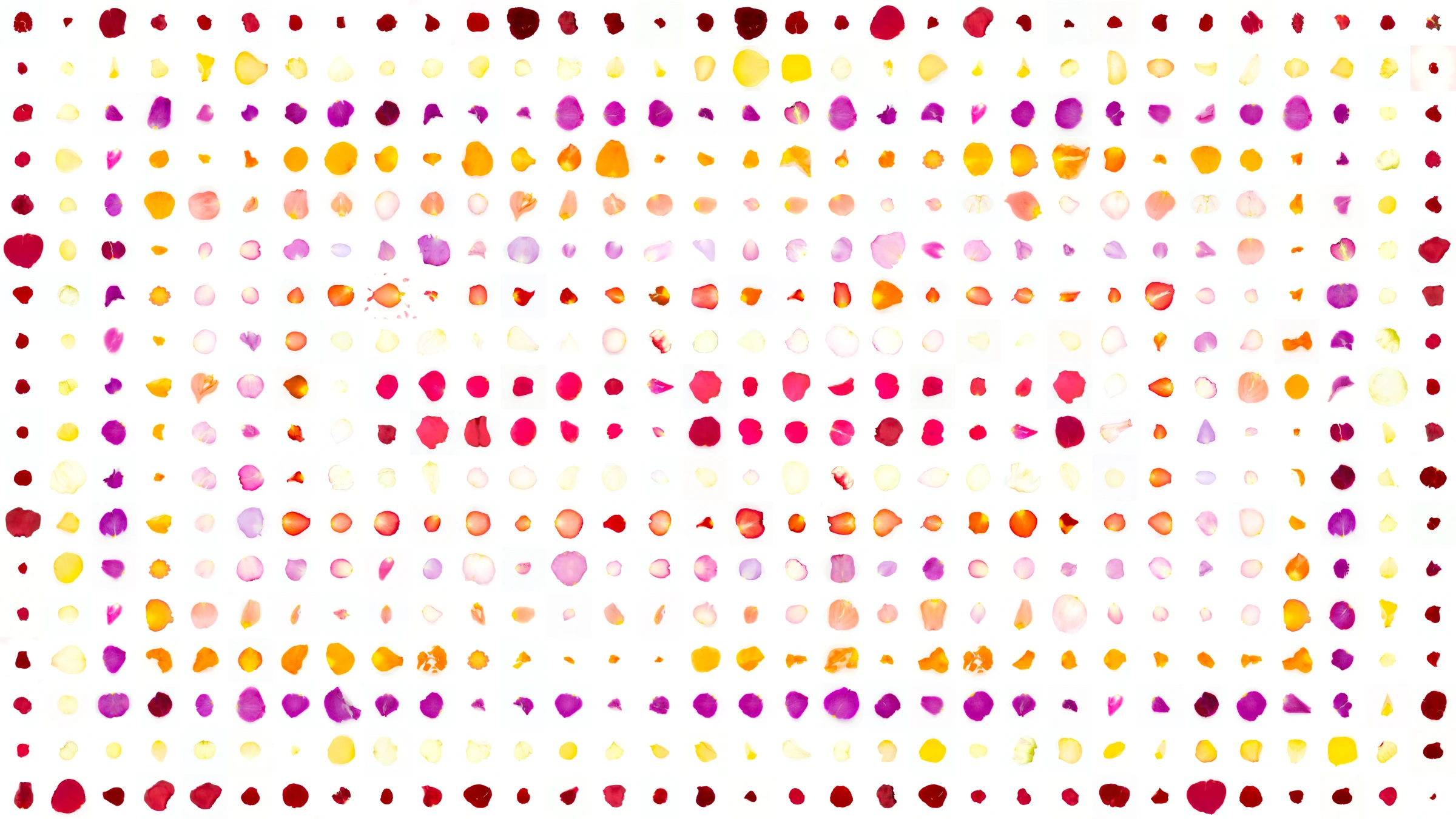
Infinite Petals
Custom generative software, 2019
Courtesy of the artist
In Infinite Petals Sarah Meyohas harnesses the data set of rose petals created by the 16 workers in her film Cloud of Petals (shown nearby) to train a generative adversarial network (GAN). A GAN is a type of artificial intelligence where two neural networks compete, one generating images while the other evaluates their authenticity. The result is a system capable of creating endless unique digital petals that never existed in nature.
These generated petals appear in gridded arrangements following various algorithmic patterns. Each artificial petal exists within a 512-dimensional latent space—the mathematical realm where AI represents and manipulates its creations.
Together, Cloud of Petals and Infinite Petals trace the journey from organic life to human classification to machine generation. They question where beauty resides when the natural and artificial blur together, and they highlight the human labor and biases that underpin our seemingly autonomous digital systems.
A type of machine learning system where two AI programs compete to improve each other. Both programs are trained on a dataset of text, images, or sound. One program (the generator) tries to create convincing artificial data, while the other (the discriminator) judges its authenticity. Through this contest, the generator learns to produce increasingly realistic outputs.
A type of learning algorithm associated with machine learning and artificial intelligence that is modeled and structured on how the human brain works. It uses interconnected nodes (like brain neurons) to process information, recognize patterns, and learn from data. By adjusting connections between nodes, it can improve at tasks like image recognition or language processing.
A step-by-step set of instructions or rules for solving a problem or completing a task. A recipe is an algorithm, as is a computer program.
An abstract, multidimensional space that organizes essential features extracted from the data used to train machine learning models. We can think of latent space like an organized warehouse where complex information (images, text, etc.) is stored in a simplified form and similar items are positioned close together. This mapping of features allows the AI (artificial intelligence) to understand patterns and relationships embedded in the data and use this knowledge to generate new content.